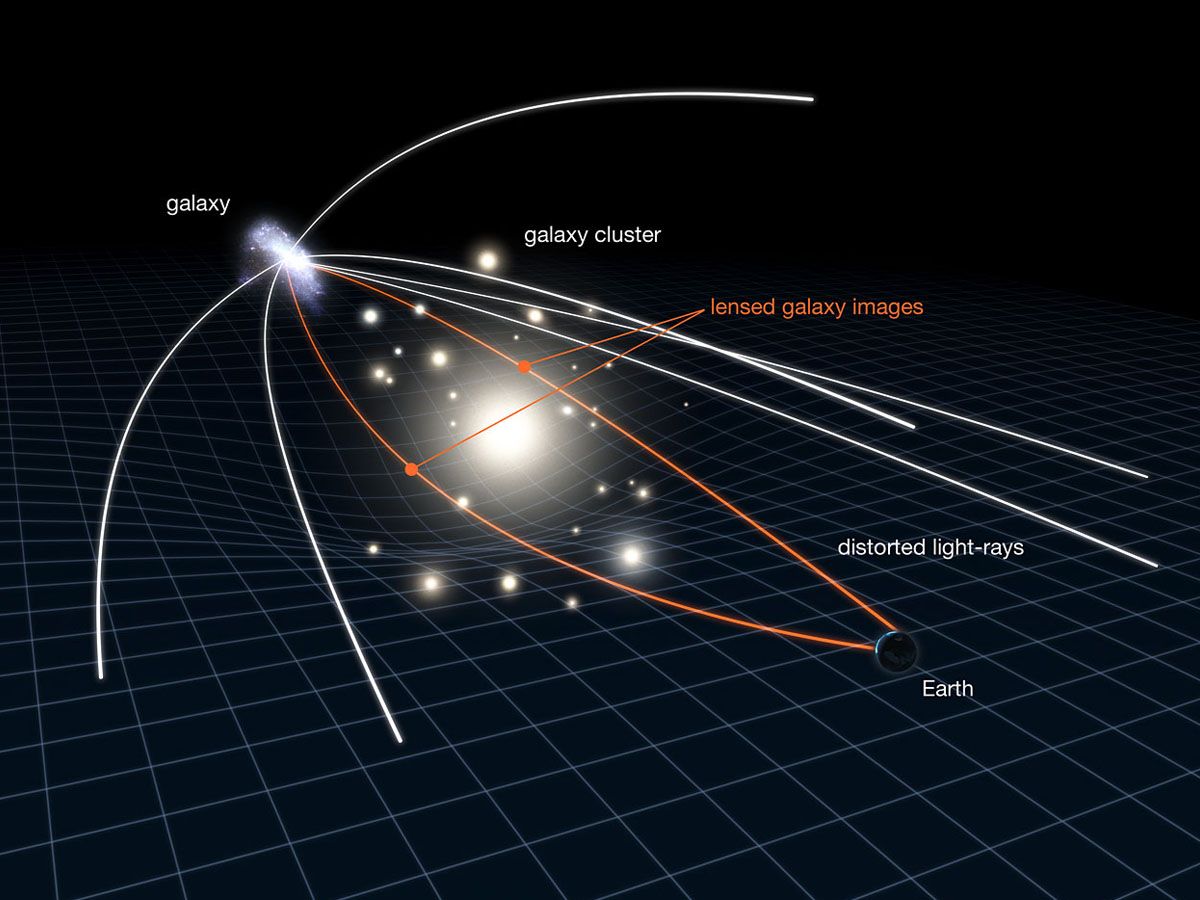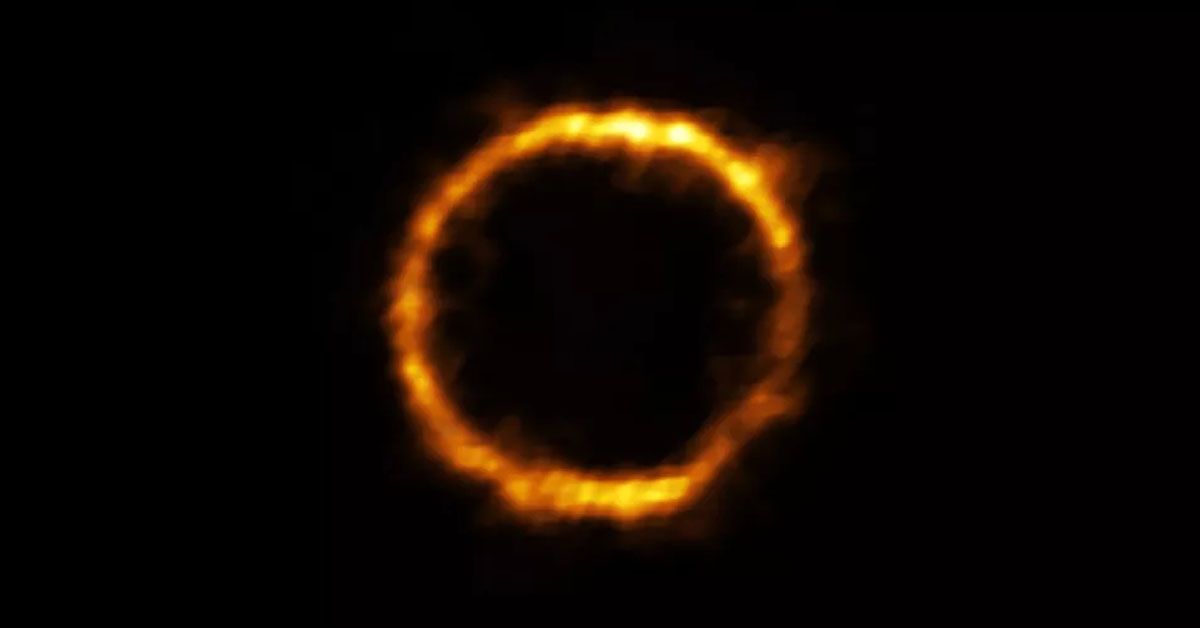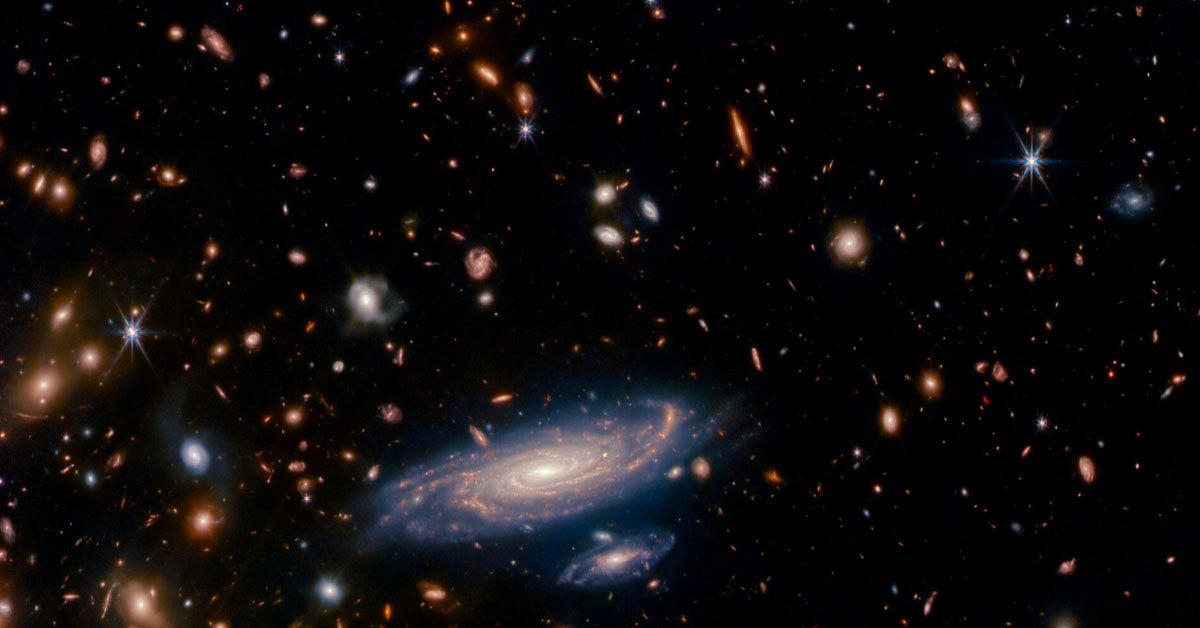The Webb Telescope has found something extraordinary, the faintest galaxy ever observed in the early universe, known as JD1. Located unimaginably far away, this tiny galaxy takes us on a journey back in time to the infancy of the universe.
You might wonder why we should care about such a small, faint galaxy. Well, galaxies like JD1 are believed to play a crucial role in the transformation of the universe from a vast cosmic dark age to the transparent, light-filled space we know today.
But, how did we manage to observe this distant, faint galaxy and what could it possibly tell us about the early universe?
Faintest Galaxy Ever Seen in the Early Universe: JD1
Let's introduce JD1, the faintest galaxy ever spotted in the early universe. A little galaxy with a big story, JD1 is located an astounding 13.3 billion light-years away from us.

This means that the light we see from JD1 started its journey when the universe was just a few hundred million years old! In other words, observing JD1 is like looking at a snapshot of the universe from billions of years ago.
What makes JD1 so important?
The Role of the First Galaxies in Reionization
We usually picture large, bright formations like our Milky Way when we think of galaxies. But the earliest galaxies looked quite different.
They were generally smaller and fainter. These humble galaxies, like our JD1, were the true pioneers of the universe. They played a crucial role during the epoch of reionization.
Imagine these galaxies as a crew of cosmic workers, cutting through the dense fog of hydrogen with their light, rendering the universe transparent.

However, their small size and faint light make them hard to detect, making their discovery and study extremely challenging.
JD1 is an example of these faint, early galaxies that were instrumental in the reionization process. Being one of the earliest galaxies, it sheds light on the first generation of galaxies during the epoch of reionization.
By studying JD1, astronomers can uncover clues about how these early galaxies looked, their structure, and most importantly, how they played their part in shaping the universe as we see it today.
The Gravitational Lensing Technique
Have you ever noticed how a glass of water can distort and magnify the view of anything behind it?
This is because light doesn't always travel in a straight line. When it passes through a medium that can bend light, like water or glass, its path changes, causing the object behind it to appear distorted or magnified.
The universe also has its natural version of this magnifying glass, a phenomenon called gravitational lensing.
In the vastness of space, anything with mass, such as stars or galaxies, has a gravitational field that can bend the path of light passing near it.
This bending causes distant objects behind the mass to appear larger and brighter as if viewed through a magnifying glass.

This phenomenon, known as gravitational lensing, has become an indispensable tool for astronomers to study extremely distant objects like JD1.
Although JD1 is faint and far away, the gravitational lens of a massive galaxy located between us and JD1 (in this case Abell2744) magnifies its light. This magnification allows the JWST to capture enough light from JD1 to study its characteristics despite its faintness and incredible distance.
The JWST, with its advanced instruments, can detect faint and distant objects that would be invisible to other telescopes. But even the JWST needs a little help when it comes to extremely faint galaxies like JD1.

This is where gravitational lensing steps in, acting like a natural magnifying glass in space. It amplifies the light from JD1, making it bright enough for the JWST to observe and study in detail.
This powerful combination is like a superhero duo, with each complementing the other's abilities, allowing us to delve deeper into the universe than ever before.
Confirmation of JD1's Existence and Its Characteristics
JD1 is a compact galaxy composed of three elongated clumps of dust and gas that are actively forming stars. Despite its faintness and small size, it's a powerhouse of star formation, blazing its way through the hydrogen leftover from the Big Bang.
JD1's structure and characteristics are typical of galaxies from the universe's early days, providing valuable insights into these cosmic pioneers.

The discovery and study of JD1 have far-reaching implications for our understanding of the early universe and galaxy evolution.
JD1's characteristics and behavior during the reionization epoch give us clues about how other galaxies may have behaved during this time.
By studying JD1, we gain insights into the properties and processes of early galaxies that contributed to the universe's transition from the cosmic dark ages to a state where light could travel freely.
Sources: ucla.edu













